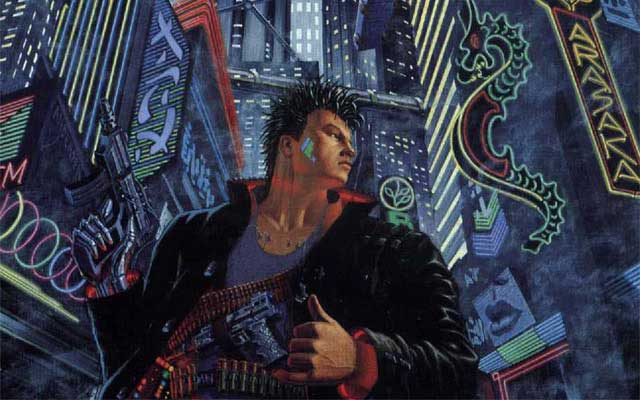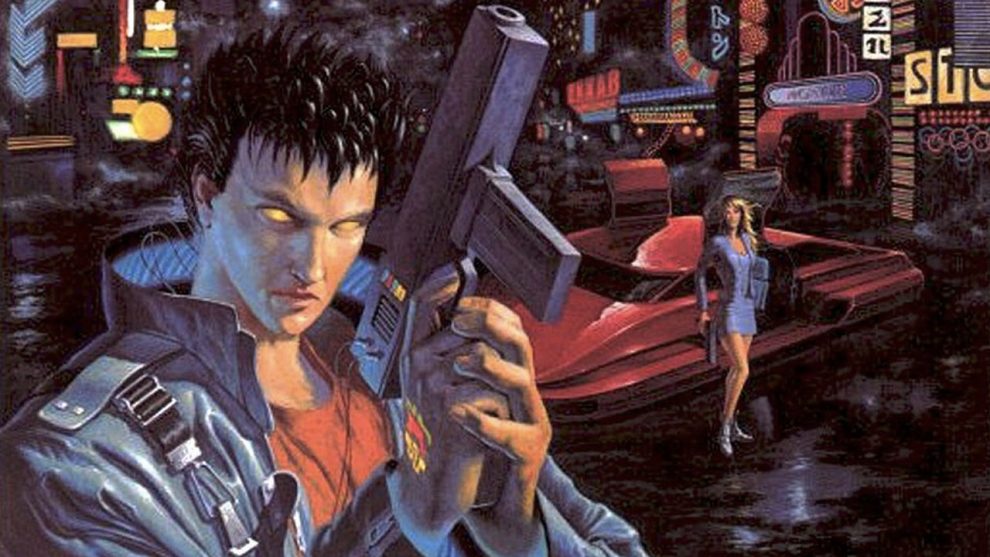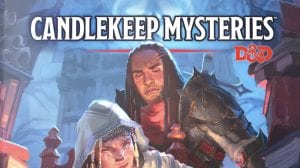Welcome to the first article of Retro RPG Reviews!
This series of articles will focus on the great (and not-so great) tabletop role-playing games of yesteryear. Re-visiting retro RPGs can be an interesting way to spend a game night because there’s no way it can be done in a vacuum. We go back and play these games for the nostalgia factor but we always bring our current events, beliefs, and values with us. These inform how we view the roles we play in these games and the games, in turn, can inform us about the history behind the games we love today.
So, grab your Crown Royal bag full of dice and put on your black leather jacket and mirrored shades as we dive into our first Retro RPG!
Cyberpunk 2020 Introduction
 In the past few years, we have seen a resurgence of the cyberpunk genre. A new Blade Runner movie, two streaming video series (Altered Carbon and Electric Dreams), a popular card game (Netrunner), and the Deus Ex video game series have all enjoyed at least moderate success. Now, with Ready Player One about to be released to theaters, it is time to wonder why cyberpunk is making a comeback. Some might argue that there are certain themes in this genre that ring true in our current society. The classic RPG Cyberpunk 2020 is a great way to explore those themes, especially now through the lens of almost 30 years of history.
In the past few years, we have seen a resurgence of the cyberpunk genre. A new Blade Runner movie, two streaming video series (Altered Carbon and Electric Dreams), a popular card game (Netrunner), and the Deus Ex video game series have all enjoyed at least moderate success. Now, with Ready Player One about to be released to theaters, it is time to wonder why cyberpunk is making a comeback. Some might argue that there are certain themes in this genre that ring true in our current society. The classic RPG Cyberpunk 2020 is a great way to explore those themes, especially now through the lens of almost 30 years of history.
Cyberpunk 2020 (or 2020 for short) was published in 1990 by R. Talsorian Games and written by a true Cyberpunk, Mike Pondsmith. It was actually the 2nd edition of the lesser known Cyberpunk (which took place in the distant future of the year 2013). Like previous RPGs, it had a focus on running missions that often turned into hyper-violent combat and skill-based Netrunning (i.e. hacking), but it did so by emphasizing a skin of true role-playing over the mechanical skeleton of its system.
There are three tenets to playing Cyberpunk 2020, which we’ll use to take a deeper look at the game.
1 – Style over Substance
The year is 2020. In this far-flung future, megacorporations feed off of the working class, the government’s high-tech algorithms sift through the public’s data feeds for anomalies, and media conglomerates control the flow of content to the masses. In this dystopian future, information is both currency and ammunition. In the dark alleys and neon lit clubs are those who push back, making their own mark where they can. Sometimes their path is glamorous, sometimes it’s violent, sometimes it’s both. This is the world of Cyberpunk 2020.
If you are unfamiliar with the term Cyberpunk, the introductory section, The View From the Edge, provides you a definition:
“Cyberpunk comes from two words. Cyber – from the term cybernetic, or a fusion of flesh and machine technology. Punk – from an early 1980’s rock music style that epitomized violence, rebellion and social action in a nihilistic way.”
Pondsmith sets it out there from the very beginning – if you’re going to play this game, you’ve got to get with the aesthetic. As long as you look and act the part, the rest doesn’t matter.
2 – Attitude is Everything
The character creation system in 2020 is surprisingly flexible. You would think that with such a specific genre, you would really only be able to play certain stereotypes. At a first glance of the ten basic Roles (similar to classes if you’re more familiar with D&D), it would seem that way. However, 2020 spends a lot of time on why your character is the way they are in this world.
The basic character creation mechanics are point-buy, where you have X amount of points to spend on building your Statistics (Stats). But, all of the physical Stats (strength and endurance) are wrapped into a single stat to make room for stats like Attractiveness (remember, Style over Substance) and Cool. Yes, there’s a coolness stat, but it measures how well your character stands up to stress and pressure. There’s also an Empathy stat that measures how well you relate to people. In a setting where the lines between man and machine blur, it’s important that there’s a tracking mechanism for humanity.
After that, 2020 devotes an entire chapter of the book (relatively unheard of in the early 90s) to Lifepath: your character’s motivations, backgrounds, flaws, and eccentricities. This is one of the earliest examples of a game devoting a lot of page-space to fleshing a character out beyond its basic stats.
3 – Always take it to the Edge
Skills are generated the same way as Stats with a wide range of choices. You can either pick one of the predefined packages for the ten roles or build your own. The same goes for the gear and cybernetics (both of which cost money).
However, cybernetics have an extra cost – that Empathy stat from before. Each cybernetic enhancement has a Humanity Cost (some fixed, some variable) and for every 10 points of cumulative Humanity Cost you lose a point of Empathy. If you get to 0, your character loses their grip on humanity and becomes a cyberpsycho! The allure of cybernetic enhancement is great, but it has consequences. How close to the edge will your character go to become “more human than human?”
4 – (Break) The Rules
The main combat system for 2020 is called Friday Night Fire Fight (FNFF) and is designed to be a fast-paced challenge resolution system without a lot of charts and tables. FNFF was built on R. Talsorian’s Interlock system. At its heart, Interlock is a basic formula: Attribute+Skill+Modifiers+Die Roll (1d10) to beat a set value. Today, any RPG player would recognize this as a basic skill check system. But, in 1990 this was revolutionary! It was simple and it scaled. You could add extra mechanics on top of it but the players really only had to understand that concept to play.
No cyberpunk RPG is complete without a hacking mechanic. In this case it’s called “netrunning”. Netrunning, like all good cyberpunk hacking, involves a virtual reality landscape where systems rise out of the horizon like monolithic fortresses and netrunners are represented by avatars that are only limited by the player’s imagination. Ready Player One’s OASIS is a great example of how this virtual setting could play out. The netrunning system is very similar to FNFF but with the addition of combining the stats of your computer (or cyberdeck) as modifiers.

Setting and Context
Cyberpunk 2020 borrows its overarching setting to the cyberpunk fiction of of the 80s. Books by the famous Mirrorshades group and movies like Blade Runner helped set the stage for the megacorps and netrunners of 2020’s dystopian future. The names and locations could be changed to anywhere in the world and it would still be the same. That being said, Pondsmith has created a great timeline of events that lead us to his vision of 2020. Multiple wars between the various Megacorporations have left devastating impacts on the world and shape it into a hyper-violent, drug-fueled orgy of survival and retaliation.
Contextually, it’s truly amazing how some of the themes have hit extremely close to the mark. Data privacy, mega-corporations controlling news and entertainment, the disparity between the wealth classes, and rapid urbanization are all topics worth consideration and that’s before you get to the concepts of artificial intelligence, longevity, and virtual reality.
Sure, some of the details are wrong (we don’t still log on to Bulletin Board Systems and the first self-aware clone was not produced last year), but that’s where the game can still be escapist fun.
Wrap-up
Cyberpunk 2020 is still a solid RPG system to this day with some of its mechanics still in use in modern RPGs. FNFF remains a legendary system that is known for being simple but deadly. Additionally, the emphasis on true roleplaying and character depth is refreshing when looking back at the older systems.
The setting itself is like great whiskey – aged to perfection but still hard to swallow. Some aspects of the cyberpunk genre are very prescient and others have grown stale. Nevertheless, a revisit down those neon-lit, rain-soaked alleys is still worth it just to remind us how close we’ve come to that world.
If you liked Blade Runner 2049 or you come out of Ready Player One thinking how cool it would be to tell stories in that world, you should definitely check this game out.
Next time, we’re going to push the genre one step farther (too far for some people) and review another cyberpunk classic… Shadowrun.
Cyberpunk 2020 can be purchased in PDF format from DriveThruRPG as can all of its supplement books. Mike Pondsmith and R. Talsorian Games are teaming up with CD Projekt Red to produce an upcoming sequel video game titled Cyberpunk 2077.
Ready Player One hits theaters in the US on Friday, March 29th.











Add Comment